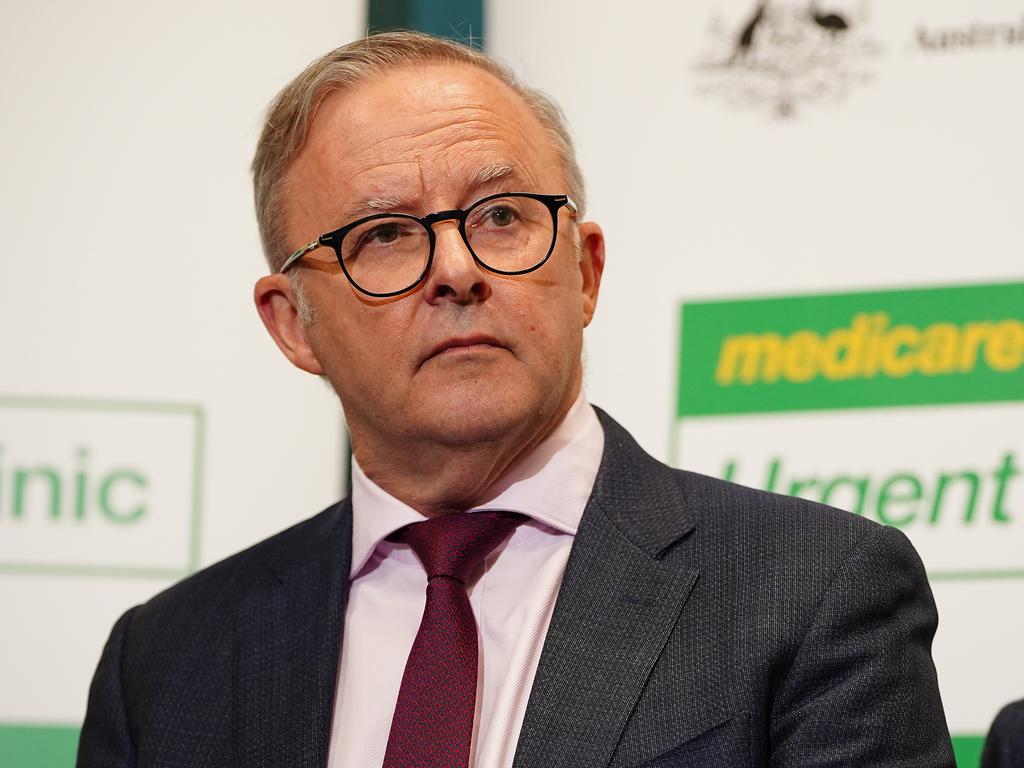Memo PM: when it comes to the cost of living, less is more

Writing recently in these pages, Treasurer Jim Chalmers emphasised that “the fight against inflation remains the Albanese government’s highest priority”.
This while the government continues to implement inflationary policies across the economy. From increasingly suffocating industrial relations, energy and financial services regulations to record levels of government spending, taxing and debt.
Chalmers claimed the “new numbers also provide more evidence our (government’s) policies are helping to directly reduce inflation”. Unfortunately for Chalmers, an examination of the ABS’s January consumer price index statistics demonstrates that it is government policy driving inflation.
According to the ABS, the expenditure categories that experienced the highest price increases were those directly and adversely affected by the dead hand of government: gas up 12.9 per cent, electricity up 10.7 per cent, tobacco up 10.5 per cent, and insurance and financial services up 8.8 per cent. The expenditure categories that experienced price declines were those barely touched by direct government policy: clothing and footwear down 0.9 per cent, furnishings and household services down 0.3 per cent, and holiday travel and accommodation down 0.3 per cent. It can only be imagined what might be Australia’s inflation rate were it not for constant government interventions in markets, taxation increases and the regulatory leviathan.
Last week, the Australian Law Reform Commission released the final report into its review of corporations and financial services legislation in Australia. It concluded “the legislation governing Australia’s financial services industry is a tangled mess” and noted “judges have described the current laws as being like ‘porridge’, ‘tortuous’, ‘treacherous’, and ‘labyrinthine’ ”. It also observed that “since 2001, the Corporations Act has almost doubled in length to more than 4000 pages and over 800,000 words”. Days later, rather than committing to address this productivity-destroying “tangled mess”, Assistant Treasurer Stephen Jones indicated the government will add yet another layer of financial services legislation to the current legislative “porridge”.
A key problem with the government’s so-called focus on cost-of-living pressures is that it barely addresses the symptoms let alone the underlying causes. In doing so, it makes the inflation disease worse. The government’s cost-of-living responses, which include electricity bill relief, increased childcare subsidies and reduced pharmaceutical co-payments do not reduce the cost of production. These measures just temporarily distort price signals, stimulate other forms of consumption, and kick the problem down the road necessitating further productivity-sapping taxes.
It should not be lost on policymakers that there is an inverse correlation between economic prosperity and the growth of government. As government expands, the range of market interventions multiplies and the volume of laws and regulations grows, resulting in stagnating economic growth and blossoming inflation.
Anywhere it has been tried, an interventionist government is economically and socially corrosive. It is not race, culture, resources, or geography but rather large and interfering government that impoverishes people. The case studies abound: the histories of North Korea-South Korea and East Germany-West Germany should be sufficient to settle the argument.
Australians are paying the price for an expanding regulatory state, government spending growing faster than GDP, and increasingly heavy-handed market interventions. Policy-driven increases to the real cost of energy and capital, key inputs into production, are smothering any productivity and real wage enhancement potential.
Meanwhile, in a target-rich environment of economic problems, the opposition is nowhere to be seen. Instead, its recent focus has been on criticising a private business for failing to stock cheap Australia Day trinkets. Perhaps the opposition believes inflatable thongs will keep Australian household budgets afloat.
January 21 marks 100 years since the death of Vladimir Lenin, the Soviet Union’s first leader.
It was Lenin who said the best way to destroy democratic capitalism is through inflation. John Maynard Keynes subsequently wrote: “By a continuing process of inflation, governments can confiscate, secretly and unobserved, an important part of the wealth of their citizens. By this method they not only confiscate, but they confiscate arbitrarily … The sight of this arbitrary rearrangement of riches strikes not only at security but (also) at confidence in the equity of the existing distribution of wealth.”
If the fight against inflation is the government’s highest priority, policy should be focused on addressing inflation. This starts with reduced government interventions in markets and enhancing the productive capacity of the economy.
Time and time again, in country after country, it has been demonstrated the ingredients for economic prosperity are competitive tax rates, limited regulation and restrained government spending, all combining to power productivity growth. Yet despite this, it is bipartisan commonwealth, state and territory practice to implement anti-productivity policies. Look past announcements and look to the numbers.
Australia’s productivity growth over the past five years has been essentially nil. This at the same time when Australia has experienced a per-capita recession and a return of inflation. The invoice for Australia’s economic policy malpractice has arrived but Australia’s policymakers have taken a runner.




The law of inverse political relevance states that the less you intend to do about something, the more you must talk about it. And so Prime Minister Anthony Albanese has summoned Labor caucus members to Canberra to talk about cost-of-living pressures.